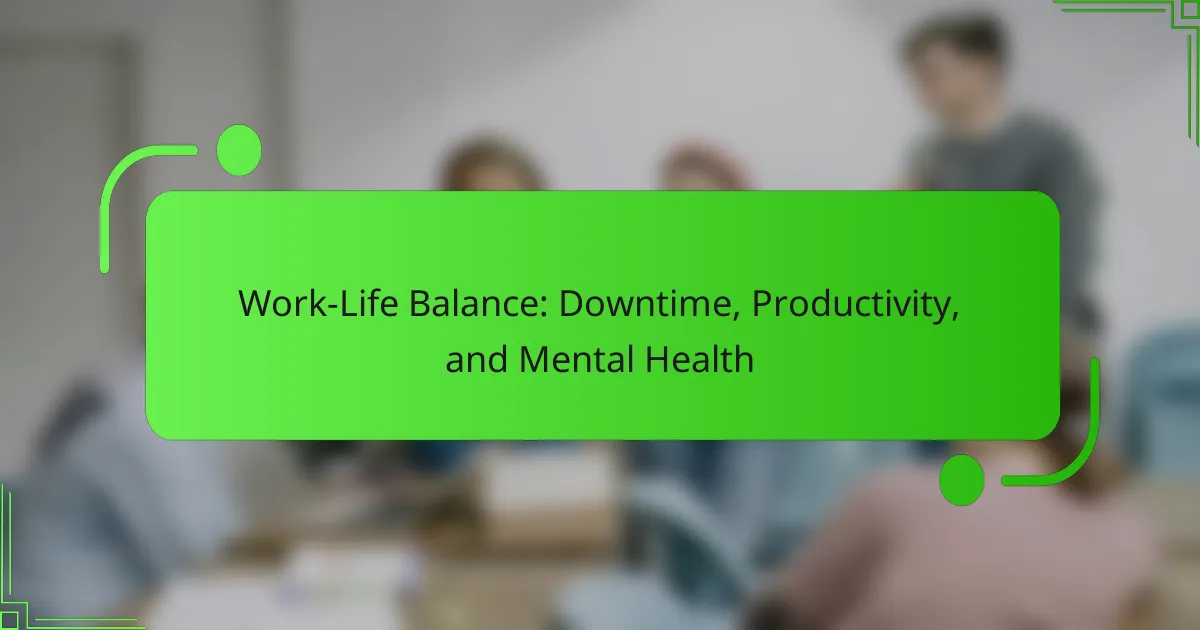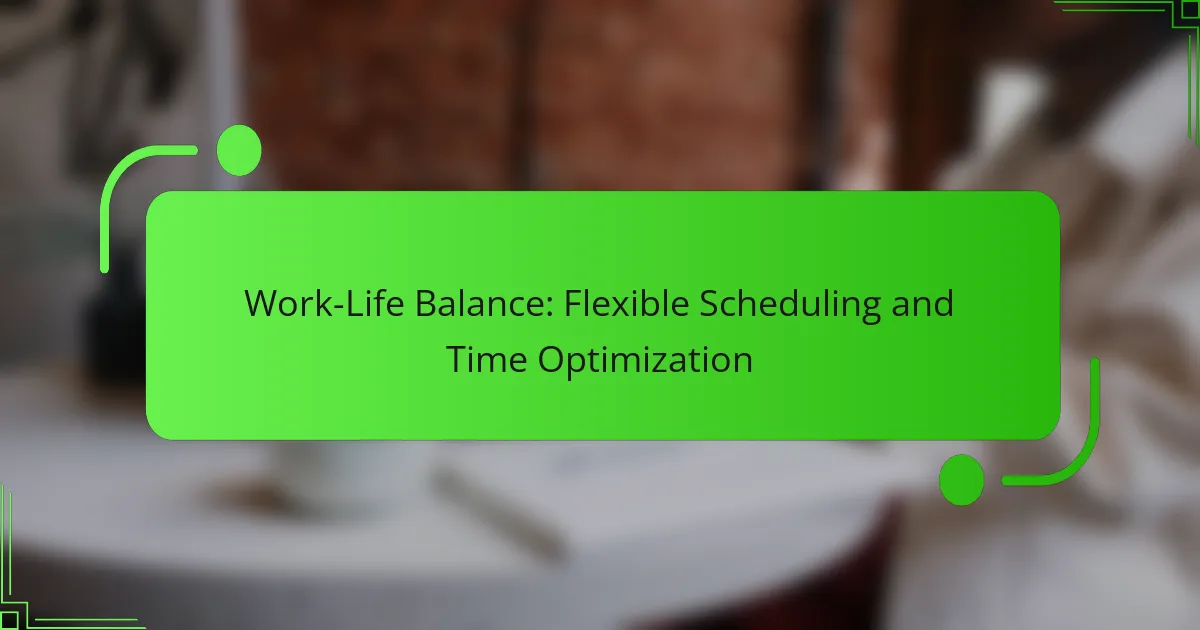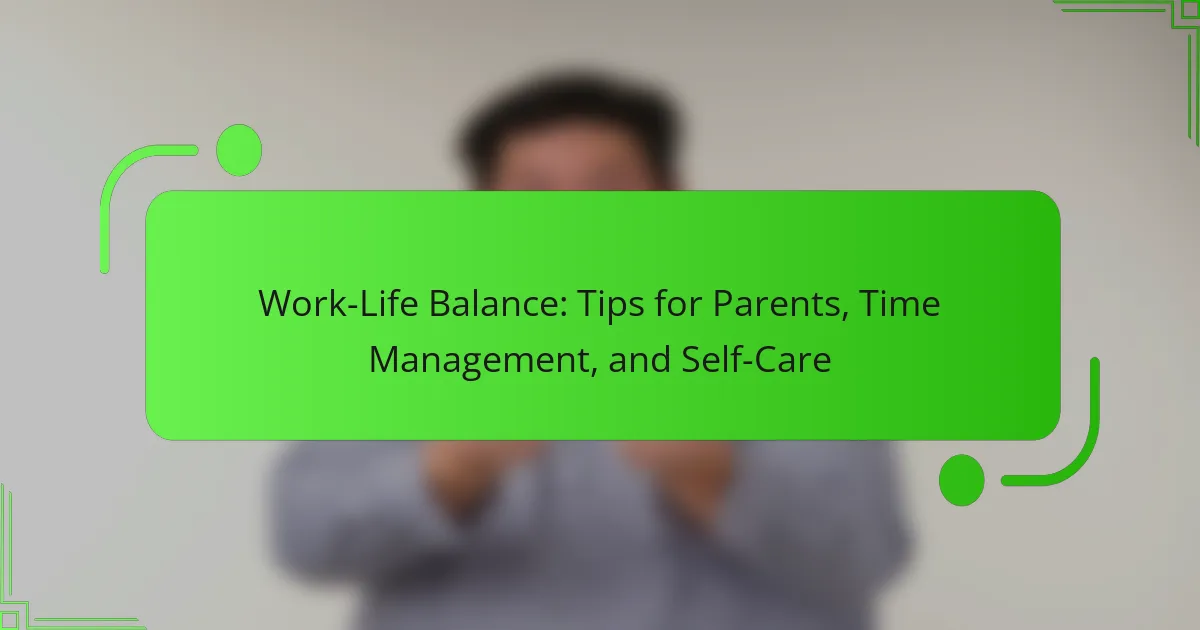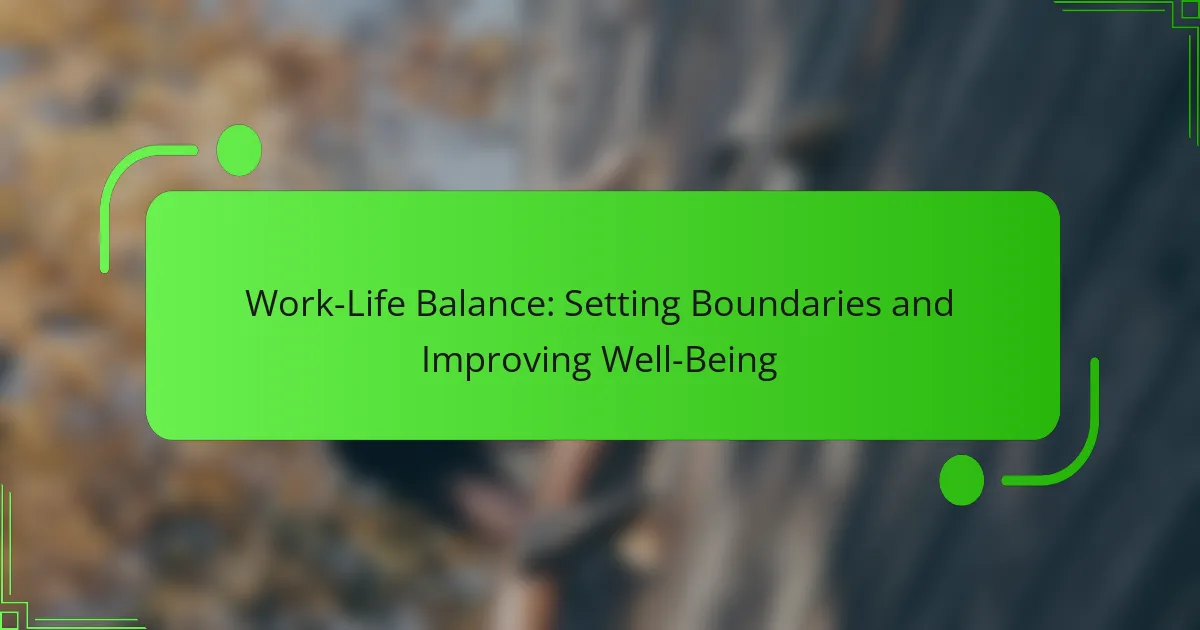Achieving a healthy work-life balance is crucial for enhancing productivity and mental well-being, especially in bustling urban environments. By implementing flexible work arrangements and effective time management, individuals can create personal boundaries that alleviate stress. Prioritizing downtime not only rejuvenates the mind but also fosters creativity and sustainable work practices, ultimately leading to a more fulfilling life both at work and at home.
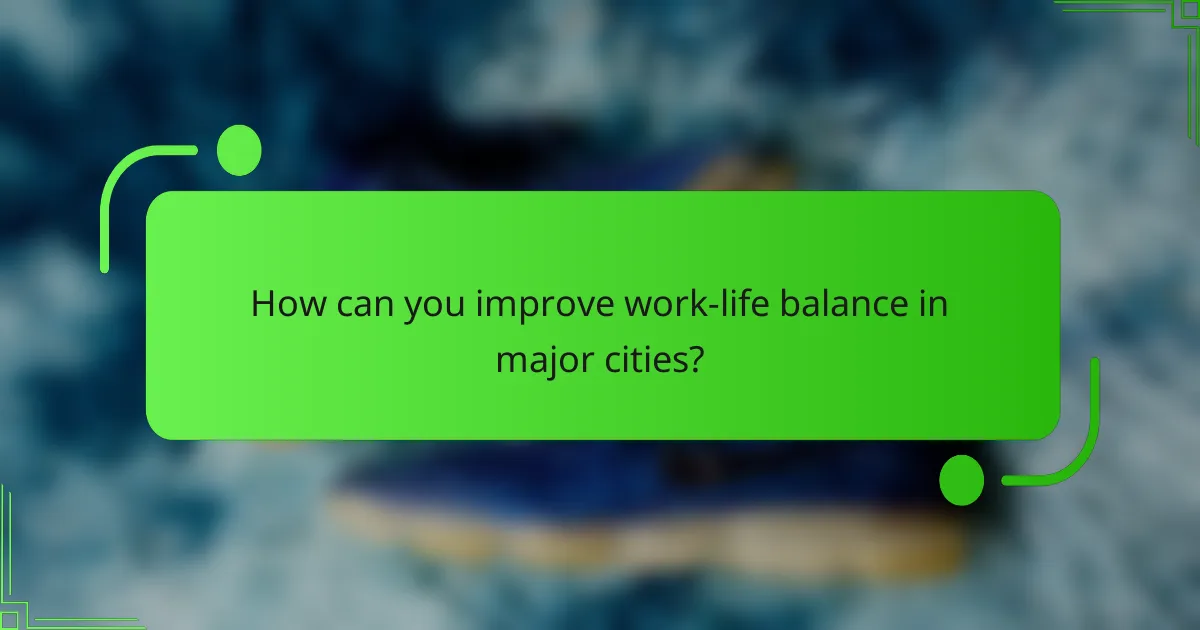
How can you improve work-life balance in major cities?
Improving work-life balance in major cities involves adopting flexible work arrangements, effective time management, and establishing personal boundaries. These strategies can help mitigate the stress of urban living while enhancing productivity and mental well-being.
Flexible work hours
Flexible work hours allow employees to adjust their schedules to better fit personal commitments and peak productivity times. This can mean starting and ending the workday earlier or later, depending on individual preferences. Many companies in urban areas are adopting this approach to accommodate diverse lifestyles.
Consider negotiating your work hours with your employer. For instance, if you find you work best in the late morning, propose a schedule that reflects this. This flexibility can lead to higher job satisfaction and lower stress levels.
Remote work options
Remote work options enable employees to perform their tasks from home or other locations, reducing commute times and increasing personal time. Many major cities have seen a rise in companies offering hybrid models, where employees split their time between the office and remote work.
Evaluate your job’s suitability for remote work. If possible, discuss with your employer the potential for a hybrid model that allows for both in-office collaboration and remote flexibility. This balance can significantly enhance your work-life integration.
Time management techniques
Effective time management techniques are crucial for maintaining a healthy work-life balance. Techniques such as the Pomodoro Technique, where you work in focused bursts followed by short breaks, can enhance productivity and reduce burnout.
Utilize tools like calendars and task management apps to prioritize your tasks. Set clear deadlines and allocate specific times for work and personal activities to ensure you stay on track without feeling overwhelmed.
Setting boundaries
Setting boundaries is essential for protecting your personal time and mental health. This involves clearly communicating your availability to colleagues and family, ensuring that work does not encroach on personal life.
Establish specific times when you will not check work emails or take calls. For example, consider designating evenings or weekends as personal time, allowing you to recharge and focus on non-work-related activities.
Mindfulness practices
Incorporating mindfulness practices into your daily routine can significantly improve mental health and work-life balance. Techniques such as meditation, deep breathing, or yoga can help reduce stress and increase focus.
Try dedicating a few minutes each day to mindfulness exercises. Simple practices like guided meditation apps or mindful walking can help center your thoughts and promote a sense of calm amidst the hustle of city life.
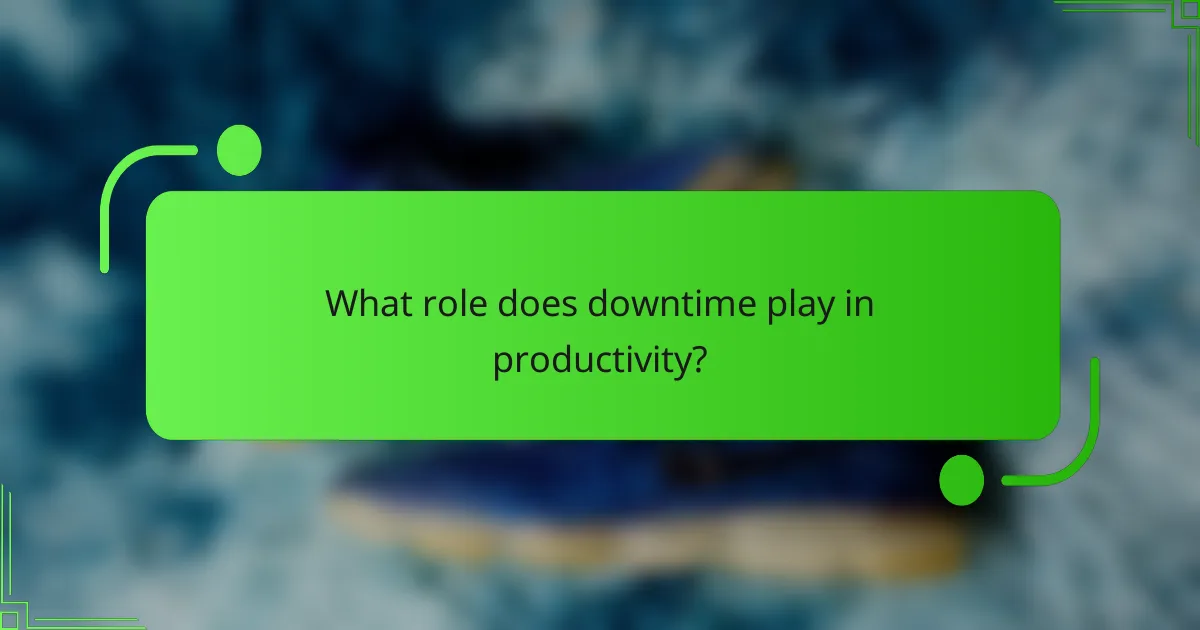
What role does downtime play in productivity?
Downtime is essential for enhancing productivity as it allows individuals to recharge and rejuvenate, leading to better performance. Taking breaks helps prevent fatigue and promotes a more sustainable work pace, ultimately contributing to higher output and creativity.
Enhances creativity
Downtime fosters creativity by providing the brain with the necessary space to process information and generate new ideas. Engaging in leisure activities or simply stepping away from work can lead to moments of insight that are often missed during continuous focus.
For instance, taking a walk or engaging in a hobby can spark innovative thoughts that improve problem-solving abilities. Studies suggest that allowing for unstructured time can significantly boost creative thinking, making it a vital component of a productive routine.
Reduces burnout
Regular downtime is crucial for reducing burnout, a state of chronic stress that can severely impact mental health and productivity. By incorporating breaks into the workday, individuals can lower stress levels and maintain a healthier work-life balance.
Employers should encourage practices such as flexible work hours or mandatory breaks to help employees recharge. Simple strategies, like the Pomodoro Technique, which involves working for 25 minutes followed by a 5-minute break, can effectively combat burnout and enhance overall job satisfaction.
Improves focus
Taking breaks can significantly improve focus and concentration. When individuals allow their minds to rest, they return to tasks with renewed energy and clarity, which enhances their ability to concentrate on complex problems.
To maximize focus, consider implementing short breaks every hour or longer breaks after completing significant tasks. This approach not only refreshes the mind but also helps maintain sustained attention throughout the workday, leading to improved performance and efficiency.
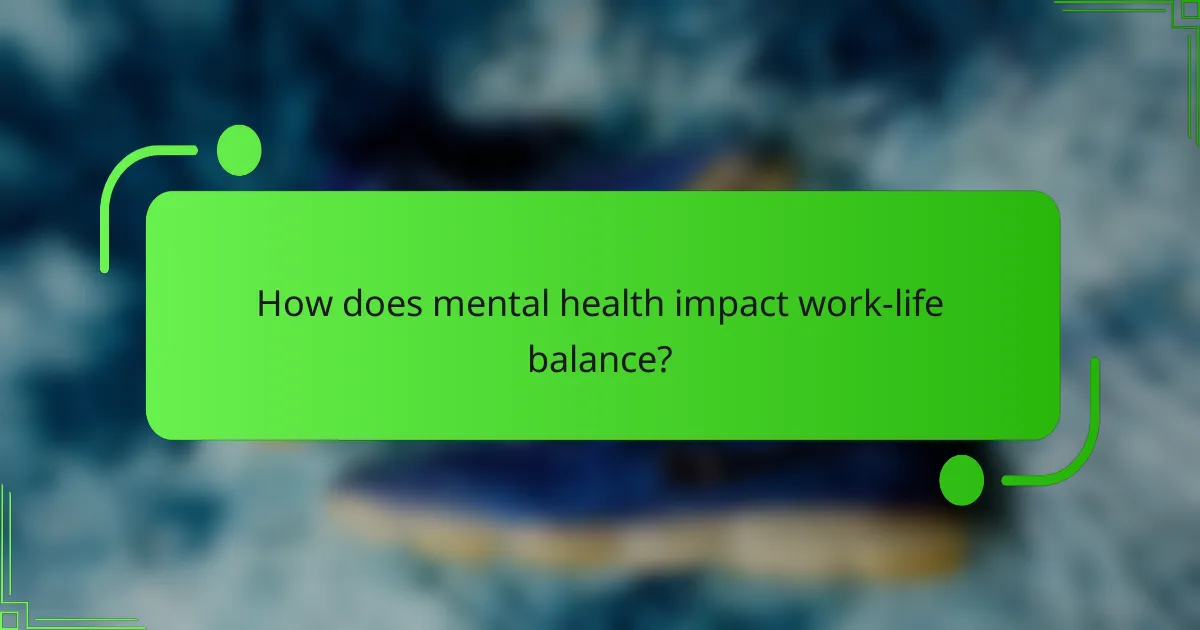
How does mental health impact work-life balance?
Mental health significantly influences work-life balance by affecting how individuals manage stress, maintain productivity, and engage with their personal lives. Poor mental health can lead to burnout, decreased efficiency, and strained relationships, making it essential to prioritize mental well-being for a healthier balance.
Stress management
Effective stress management is crucial for maintaining a healthy work-life balance. Techniques such as mindfulness, regular exercise, and time management can help reduce stress levels. For instance, dedicating a few minutes daily to deep breathing or meditation can lower anxiety and improve focus.
Employers can support stress management by promoting flexible work schedules and encouraging breaks throughout the day. This approach helps employees recharge and return to their tasks with renewed energy, ultimately enhancing productivity.
Emotional resilience
Emotional resilience refers to the ability to adapt to stress and adversity, which is vital for achieving work-life balance. Building resilience involves developing coping strategies, such as positive self-talk and problem-solving skills. Engaging in activities that foster a sense of purpose can also enhance resilience.
Individuals can practice resilience by setting realistic goals and maintaining a positive outlook, even during challenging times. For example, focusing on small achievements can boost confidence and motivation, making it easier to navigate work and personal responsibilities.
Support systems
Having strong support systems is essential for maintaining mental health and achieving work-life balance. This can include family, friends, or professional networks that provide encouragement and assistance during stressful periods. Open communication with these support systems can help individuals express their needs and feelings effectively.
Organizations can foster support systems by encouraging teamwork and creating a culture of openness. Regular check-ins and mental health resources, such as counseling services, can also empower employees to seek help when needed, promoting a healthier work environment.
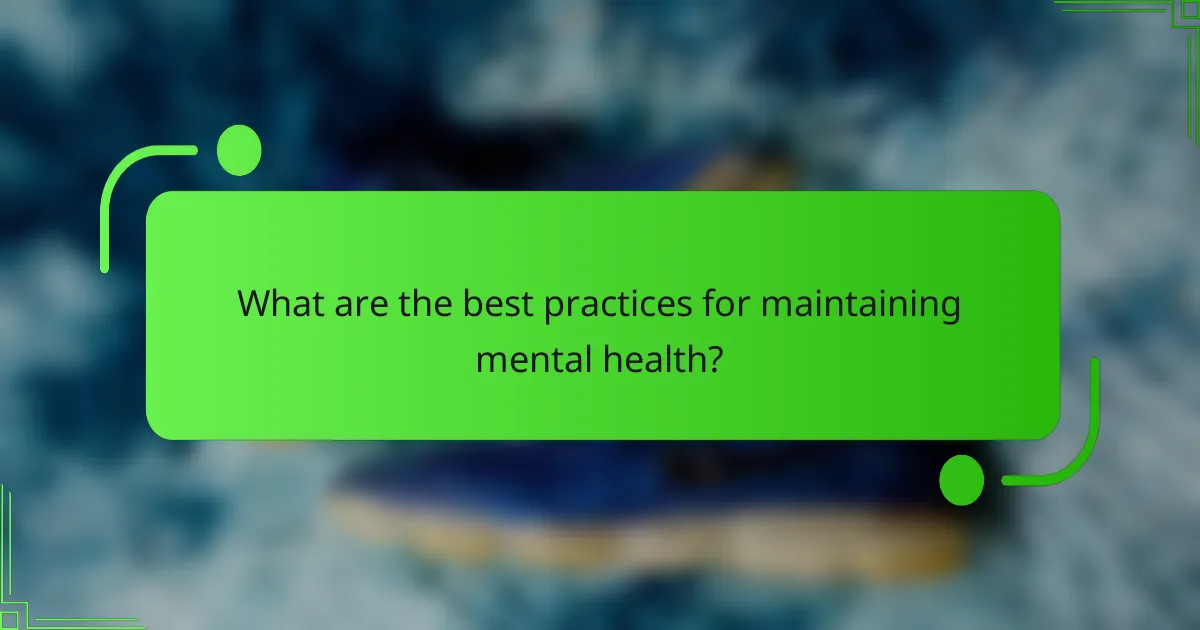
What are the best practices for maintaining mental health?
Maintaining mental health involves a combination of lifestyle choices and support systems that promote well-being. Key practices include regular exercise, a healthy diet, nurturing social connections, and seeking professional therapy when needed.
Regular exercise
Engaging in regular physical activity is crucial for mental health. Exercise releases endorphins, which can improve mood and reduce feelings of anxiety and depression. Aim for at least 150 minutes of moderate aerobic activity each week, such as brisk walking or cycling.
Incorporating strength training exercises at least twice a week can further enhance mental well-being. Simple activities like yoga or dancing can also be effective and enjoyable ways to stay active.
Healthy diet
A balanced diet plays a significant role in mental health. Consuming a variety of fruits, vegetables, whole grains, and lean proteins can provide essential nutrients that support brain function. Omega-3 fatty acids, found in fish and flaxseeds, are particularly beneficial for mood regulation.
Limit intake of processed foods, sugars, and excessive caffeine, as these can negatively impact mental clarity and emotional stability. Staying hydrated is also important; aim for about 2 liters of water daily.
Social connections
Building and maintaining social connections is vital for mental health. Strong relationships provide emotional support and a sense of belonging, which can buffer against stress. Engage with friends and family regularly, whether through in-person meetings or virtual catch-ups.
Consider joining community groups or clubs that align with your interests to expand your social network. Volunteering can also foster connections while providing a sense of purpose.
Professional therapy
Seeking professional therapy can be an effective way to maintain and improve mental health. Therapists can provide guidance, coping strategies, and a safe space to discuss challenges. Consider therapy if you experience persistent feelings of sadness, anxiety, or overwhelming stress.
Look for licensed professionals who specialize in areas relevant to your needs, such as cognitive-behavioral therapy (CBT) or mindfulness-based approaches. Many health insurance plans cover therapy sessions, making it more accessible.
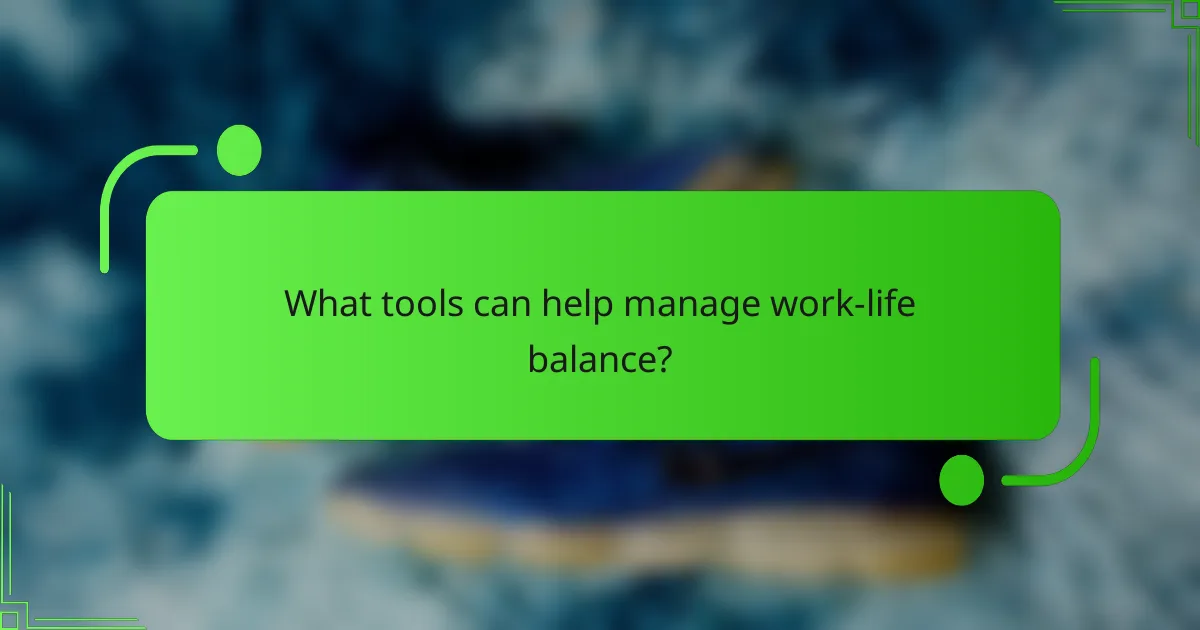
What tools can help manage work-life balance?
Several tools can effectively assist in managing work-life balance by enhancing productivity and ensuring adequate downtime. Utilizing the right applications can streamline tasks, track time, and improve overall mental health.
Time tracking apps
Time tracking apps help individuals monitor how they spend their working hours, making it easier to identify patterns and areas for improvement. These tools can provide insights into productivity levels and highlight when breaks are necessary to avoid burnout.
Popular time tracking apps include Toggl, Clockify, and Harvest. Each offers features like reporting, reminders, and integration with other productivity tools, allowing users to customize their experience based on their specific needs.
To maximize the benefits, set clear goals for your time usage and review your tracked data regularly. This practice can help you adjust your work habits and enhance your work-life balance effectively.
Task management software
Task management software organizes tasks and projects, making it easier to prioritize work and manage deadlines. These tools can help reduce stress by providing a clear overview of what needs to be accomplished, allowing for better planning and execution.
Examples of task management software include Trello, Asana, and Monday.com. Each platform offers unique features like collaborative boards, deadline reminders, and progress tracking, which can be tailored to fit individual or team workflows.
When using task management software, avoid overloading your task list. Focus on a manageable number of tasks each day to maintain productivity without feeling overwhelmed. Regularly review and adjust your priorities to stay aligned with your work-life balance goals.
